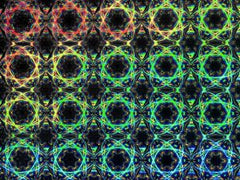Electronics get smaller - and cooler - with graphene
Anyone that keeps an eye on modern technology will know the fierce battle that engineers have been fighting trying to keep up with Moore's law. For more than half a century, the number of transistors on integrated circuits has doubled every two years. As the transistor density has increased to such extent that transistor dimensions have shrunk to the order of 10 nanometers, packing even more transistors on a chip has become exceedingly hard. The main challenges are integration of transistor functionality with such unbelievable precision, and heat. Now graphene technology is starting to address both these limiting issues.
 As electrons zip through circuits, they lose some of their energy to heat. As the circuits get smaller, the heat density increases. The heat problem has become so big that a recent study showed that 50% of the electricity consumed by big data servers goes on cooling the servers. Now researchers at Chalmers University of Technology, that leads the billion-euro Graphene Flagship, have shown that a layer of graphene can efficiently guide heat away from hot circuit elements. The temperature was reduced in some cases up to 13 degrees Celsius, which could double the lifetime of the electronic component. The team used CVD-grown graphene, a technology that Graphenea is proud to excel in.
As electrons zip through circuits, they lose some of their energy to heat. As the circuits get smaller, the heat density increases. The heat problem has become so big that a recent study showed that 50% of the electricity consumed by big data servers goes on cooling the servers. Now researchers at Chalmers University of Technology, that leads the billion-euro Graphene Flagship, have shown that a layer of graphene can efficiently guide heat away from hot circuit elements. The temperature was reduced in some cases up to 13 degrees Celsius, which could double the lifetime of the electronic component. The team used CVD-grown graphene, a technology that Graphenea is proud to excel in.
Not only is graphene taking the heat out of circuits, it is helping to make circuits smaller. Chemists at the University of Copenhagen have made a tiny transistor, activated with light, featuring graphene as the transparent contact. The device is truly tiny: the active area consists of only one monolayer of photosensitive molecules. The graphene electrode is only 5 nanometers thick, permitting most of the light to pass through to the active area, while still providing better electrical contact than other solutions. Graphene oxide, used as the transparent contact, is one of the staple products offered in our online graphene store.
As if that isn't impressive enough, scientists at Aalto and Utrecht Universities have managed to make electrical contact between graphene and gold using only a single chemical bond. The bond was placed at exactly the desired position on a graphene nanoribbon using atomic force microscopy and scanning tunneling microscopy. The work is an impressive demonstration of the level of structural control offered by modern technology, as well as being a peek into the future of electronics.
We already wrote about the use of graphene for energy applications. Research in that direction keeps producing potentially world-improving results, the latest coming from MIT. Researchers have built an ultrathin solar cell, made of graphene and other two-dimensional materials. The cell is 20 to 50 times thinner than any other solar cell made today. The research points to a world in which just about anything is covered with light-harvesting cells that are practically invisible, each one collecting the energy of the Sun and sending it through equally invisible wires to the power grid. If someone out there is looking to commercialize in this direction, we're on the same page!
